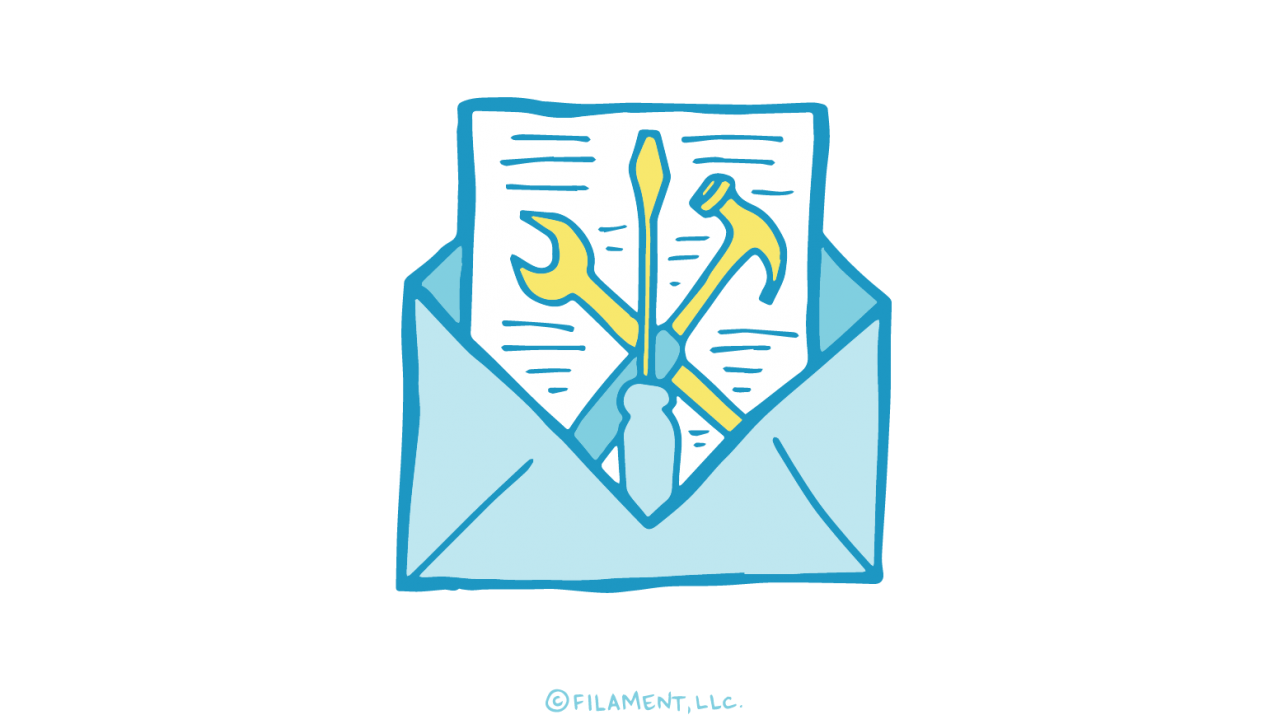In 2015, the average attention span of adults fell to just 8 seconds. (That’s less than the attention span of a goldfish.) You have less time to make an impact than ever before, so it’s important to convey your message quickly. At the same time, the human brain is hardwired to attach to stories. Thankfully, you have visual storytelling at your disposal to meet each of these needs. Visual storytelling can take many forms in email: images, GIFs, infographics, graphic text, and videos, to name a few. Read on for six tips and examples of visual storytelling at its best.
1. Know your audience.
When you’re writing a story, it’s essential to know who your audience is going to be. A story for kids is going to read much differently than one for adults, similar to how an email for millennials is going to be different from an email for baby boomers. Part of planning your visual storytelling strategy is knowing your audience inside and out.
Be sure that your audience understands and enjoys the kind of story you’re telling, too. For some users, it might just be frustrating. Be sure your audience’s needs and interests are driving the stories you tell and the visual ways in which you tell those stories.
Take a look at the two email images below intended for two very different audiences:
From: Express
Subject Line: Extra 50% off Clearance? It’s After Party time!

From: Gap Kids
Subject Line: shower forecast? 100% cute + covered

2. Get personal.
Once you know everything there is to know about your audience, you can get personal with visual stories that speak to their needs and interests. In the process, make sure you prioritize the tasks. Actions that are critical to completing user goals must be explicitly visible.
From: Etsy
Subject Line: Hot for Home: The New Rustic

3. Make it yours.
You want to make sure you’re using a consistent style in all of your emails. Check out these two examples from Bath & Body Works. You’ll see that they use a consistent color scheme that allows subscribers to know immediately who the email is from. In your emails, you should do the same. A consistent style may mean using a uniform color and font scheme in your infographics, charts and overall email. And, of course, you’ll also want to include your logo and other elements of your branding.
From: Bath & Body Works
Subject Line: Suds up to the Italian Seaside with 5 for $18 Soaps!

Subject Line: Miss this and you’ll be ![]() – FREE item disappears TONIGHT
– FREE item disappears TONIGHT

4. Share a moment.
Know what people love? Cool videos. GIFs, too. In the example below, REI combines both with a GIF in their email that links to an inspiring video. That’s shareworthy times two. Curate social media-friendly visuals that drive an immediate response. Then, analyze your most positive, shareworthy content and look for trends to further amplify what your audience is sharing the most.
From: REI
Subject Line: Watch + Get Inspired: The Redeeming Power of Trails

5. Make subscribers a character in the story.
How can you make your subscribers characters in your story? User-generated images. Gap does a great job of incorporating these in their emails while highlighting their social media community. User-generated content is a smart and effective way to engage your target audience and allow them to be part of your content creation.
From: Gap
Subject Line: insta-style: share your denim


6. Get friendly with mobile.
While “showing” versus “telling” can be very powerful, email deliverability cannot suffer at the expense of visual content. Make sure your visual stories are mobile friendly, as in this example from Bose.
From: Bose
Subject Line: Your TV and Music Never Sounded Better

Conclusion
Our suggestion here is that you think about using visual content as visual storytelling. Rather than just tossing in a few images here and there, you want to curate a visual story with your graphics, colors and more, and in the process, combine those visual elements with well-written text.
Balance visuals with compelling text that’s succinct and easy to understand. Your best bet is to do some split A/B testing to find out what works best with your audience. Beyond that, it probably should change the way you’re thinking about visual content in your email marketing altogether.
One last thing: Don’t have images just for the sake of having images. Your visuals still need to be relevant, and every visual needs to do the work of telling your story and creating a connection to your brand.
Do you have a great success story about how you put visual storytelling to work in your email marketing? Share your experience in the comments section below.
Get in contact with Filament to start create compelling visual stories today.


